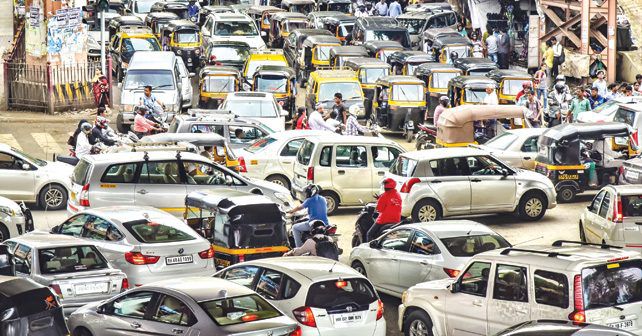
The AAUI President says that traffic congestion doesn’t just cause delays, it’s fatal!
With 400 deaths a day, road accidents continue to snuff out lives en masse in India. And one of the main reasons behind these fatalities is road congestion. If studies are conducted with vision based traffic monitoring systems, which are equipped with sensors and video cameras, it will prove that more often than not it’s road congestion that leads to aggressive speeding.
The Indian road network of 5.4 million kilometres consists of 1,00,087 kilometres of national highways and 1,54,522 kilometres of state highways. India’s road network is the second largest in the world after China with single-lane, two-lane, four-lane, six-lane and eight-lane corridors making up 29%, 55%, 16.39%, 0.35% and 0.06% respectively.
However, it can be said without hesitation that India lacks matching efforts to enforce any form of discipline on our roads. So how does road congestion lead to speeding? Well, it’s because drivers attempt to make up for the time lost in traffic jams. Studies reveal that 40-45% road mishaps occur because of speeding.
The stress of waiting in gridlock can get intense – leaving you frustrated and anxious to reach your destination in time. Road deaths have been steadily declining in Europe and America, but in India the fatalities continue to rise. I travel to many countries, and often I hear remarks from the global community about how Delhi roads paint a depressing picture of the Indian Capital. With more than 8 million cars on the road and 1,200 new cars being added every day, motorists constantly jostle for space in the Capital. With road density of approximately 1.55kms per 1,00,000 people, about 80 vehicles per kilometre and traffic signal cycle lengths varying from 120 to 180 seconds, one is virtually trapped in traffic. Mixed traffic on Delhi roads is another crucial factor that increases the heart rate of motorists.
Approximately half-a-million vehicles criss-cross the capital every day. The number of road deaths are three times more than the murder count. Use of mobile phones, texting and erratic driving are additional factors that contribute to speeding. Multitasking behind the wheel when stuck in traffic also makes drivers distracted. Everyone tries to wriggle out of traffic snarls, and we forget that it’s not the speed but the destination that ultimately matters.
At toll tax plazas, motorists trail behind each other in unending queues. And once they cross the toll-gates, they freely flex their right foot to make it to their destination on time. Here again, ostensibly, the cause behind speeding is the congestion at the toll plaza.
Frankly, since expressways and highways are built with the sole objective to allow free movement of traffic, their very purpose is defeated when drivers have to spend 30-40 minutes just to pay toll. It’s high time, then, that India introduces an automated toll collection system to ensure the smooth flow of traffic.
An electronic toll collection system essentially consists of a prepaid card from which the toll is deducted each time a vehicle crosses the toll plaza. All one needs to do is buy a smart toll tag or card and fix it on the vehicle’s windscreen. The tag enables automatic deduction of toll charges and lets the motorist pass through the toll plaza without stopping for cash transactions at the collection booth. The tag can be recharged as and when required. One can even recharge the toll tag through mobile phones, and receive SMS alerts for toll transactions, low balance, etc.
Traffic congestion also affects the economy. Traffic snarls cost Australians $18 billion a year, and, by 2031, the amount will increase to about $53 billion. That’s roughly the same as the production value of the Australian agriculture industry!
So it would be wrong to presume that traffic congestion slows down motorists. On the other hand, it increases the need for speed.
T.K. Malhotra is the President of the Automobile Association of Upper India (AAUI).























Write your Comment